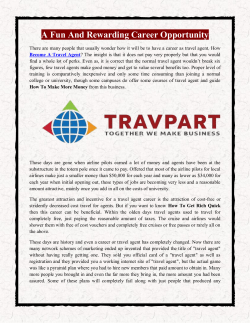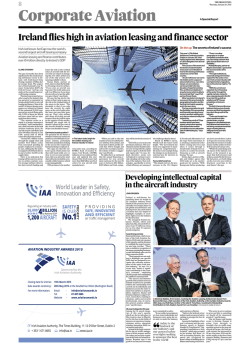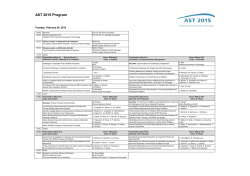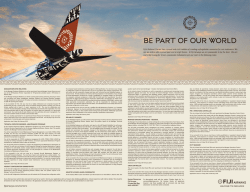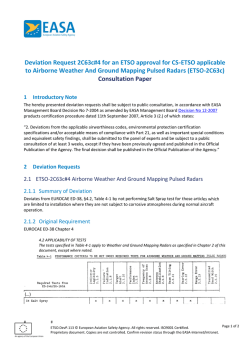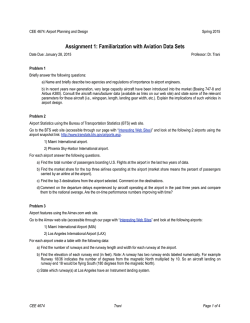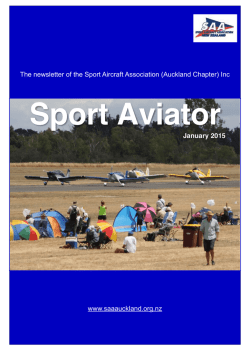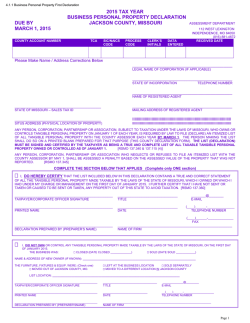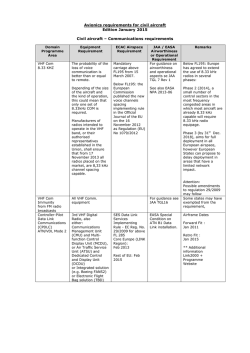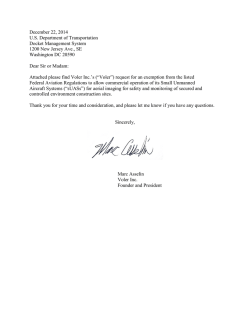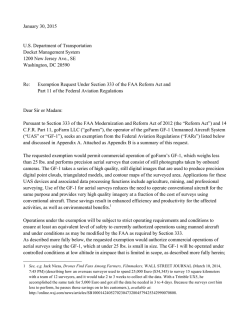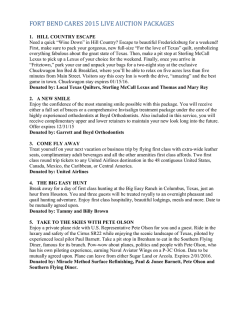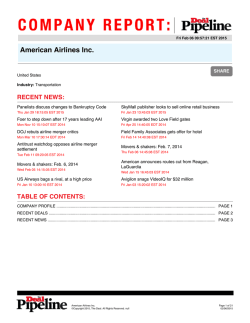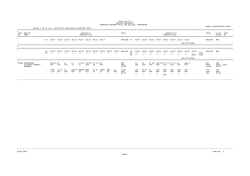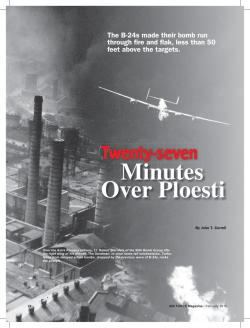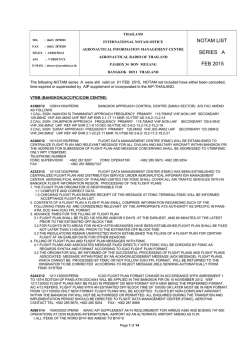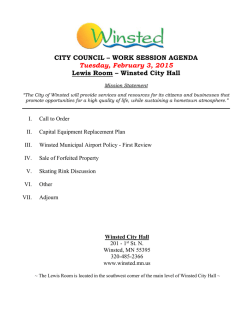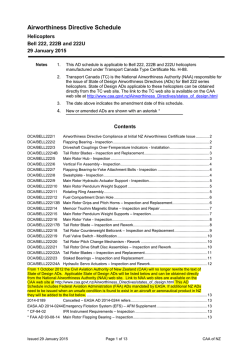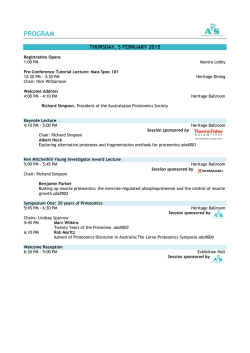
Market moving towards aircraft backed securities
10 CorporateAviation THE IRISH TIMES Thursday, January 29 , 2015 Market moving towards aircraft backed securities Risk reduction: The Cape Town treaty Poor return on investment from cash and bonds means ABS to feature in the future TheCapeTownConventionis aninternationaltreaty designedtoreducetheriskof lossbycreditorsinaircraft transactions.Ithasmadeit possibletoexpandtheEETC structurebeyondUSairlines.In countrieswhereithasbeen ratifiedandenteredintoforce, theCapeTownConvention providescreditorsinaircraft transactionswithprotections similartoChapter11.10ofthe USBankruptcyCodeinthe eventofthebankruptcyofan airlinebasedinthose countries. Irelandhascommittedto implement“AlternativeA”of theconventioninIrishlaw.This willmeanthatwithin60 calendardaysofaninsolvency orthreatenedinsolvencyofa lessee,mortgagoror conditionalpurchaser,the lessor,financierorconditional sellercangettheaircraftasset back;theaircraftwillbe preservedanditsvaluewillbe maintainedduringthe60-day period;andtheIrishauthorities willco-operateintheexercise ofremediessubjecttoaviation safetyrequirements. Thisaddedlevelof protectionforlendersand lessorsshouldmakeABSs evenmoreattractivetoIrish investorsinfuture. EETCs have been described as the next generation of debt financing for airlines BARRY McCALL The global aircraft finance market is simply vast. Over the next 15 to 20 years, the world’s airlines are going to require somewhere in the region of 30,000 new aircraft – and these all have to be financed in one way or another. And the numbers involved are truly staggering – between $110 billion and $120 billion a year for the foreseeable future, according toKPMG head of aviation finance, Tom Woods. The requirement for funding on this scale has led to a very sophisticated aircraft finance market but with quite pronounced differences in various parts of the world. “The markets for new aircraft are quite different,” explains PwC aviation practice partner, Ronan Doyle. “The US market is fairly well advanced and mature and the majority of new aircraft purchased are to replace older ones. In China and the Far East, demand is driven by incremental volume growth as a result of increased personal and business travel, while Europe is somewhere in between. Historically, the funding market in the US and Europe has been very different as well.” Again, this has more than a little to do with market maturity with the US capital markets being that bit more advanced. “Aircraft leasing has always been quite attractive to US airlines,” Doyle points out. “US bankruptcy rules make it relatively easy for the leasing company to get the asset back in the event of a default, while from the airlines’ perspective they don’t have to worry about the residuals on the aircraft – the leasing company has to take it back while the airline can get a new super-duper model at the end of the lease.” Despite Ireland being a glob- al centre of excellence for aircraft leasing, Europe has always been one step behind the Americans with respect to aircraft finance, with airlines using more traditional sources such as bank lending. But, according to Doyle, the market is ready to move on for a number of reasons and aircraft-backed securities (ABS) will be a much greater feature in the future. Among the reasons for this are the poor return on investment available from cash and bonds and the requirement on European banks to deleverage their balance sheets. Doyle explains that a fairly typical ABS might involve a leasing company putting a number of the aircraft it owns and has leased out into a vehicle in which investors can buy shares. The investors benefit from the income generated by the aircraft with the attraction of a very predictable return. Deeperunderstanding “We are seeing a broader range of investors moving into the space,” says KPMG’s Tom Woods. “There is a better and deeper understanding of the industry now and people are getting a lot more comfortable with aircraft-backed securities. The industry’s track record is very good. There have been very few defaults on leases and the lessors have demonstrated an ability to ride out the storms which have hit the aviation sector from time to time. They have also demonstrated an ability to move aircraft on from airline to airline at the end of leases.” But there are other options for airlines wishing to fund aircraft purchases and these include what are known as enhanced equipment trust certificates (EETCs). These have been described as the next generation of debt financing for air- ‘‘ There is a better understanding of the industry now and people are getting a lot more comfortable with aircraft-backed securities lines. EETCs are corporate debt securities usually issued by an airline and which are secured against the aircraft and are enhanced by elements such as debt tranching, availability of liquidity facilities and over-collateralisation. They have been very attractive to US investors for some time. The chief advantage to the airline is a lower cost of finance while the attraction to investors is the same as with other ABSs. However, they have mainly been confined to the US because of the advantageous bankruptcy regime there. This is changing, however, with the introduction of what is known as the Cape Town Convention in countries outside of the US. This offers similar protections to lenders and lessors as US bankruptcy law, and the recent Aviation Act is bringing it into Ireland and will make this form of finance available here. NorthAmericanmarket “EETC and ABS transactions have for many years been a very important source of funding in the North American market with virtually all rated US airlines going to the bond markets on a regular basis to issue asset backed or vanilla corporate notes,” says Donna Ager, head of aviation with Maples and Calder. “Non-US airlines traditionally not accessing the bond market was less to do with their lack of credit rating in the market, more the attraction of relatively cheap bank- ing funding. Ironically, the European flag-carriers who have the ratings required to attract investment in capital markets issues have been less active participants in that space as their more traditional approach has seen them more comfortable accessing bank and ECA debt.” She points out that the ABS market for non-US players grew dramatically in the years to 2008 but since the financial crisis the market contracted before beginning to grow again of late. “However, the tide has begun to turn and in the last two years we have seen both non-US airlines including BA, Air Canada, Emirates and lessors such as Avolon successfully launch bonds in the international markets – in some cases ■ Beijing Airport in China: demand for new aircraft is driven by volume growth through increased personal and business travel supported by relevant ECAs, which is a completely new development. In lessor transactions, the quality of lessees, the value of the aircraft and the level of the revenue streams from the asset are heavily focused on; while in airline transactions, jurisdictional issues as well as the airlines’ credit ratings, are the key drivers.” Keychallenge “In structuring the transactions, the novation of assets into the structures (for ABS deals in particular) is a key challenge, and timing, cost and success of this is crucial to the success of the launch and completion of the bond issuances,” adds Nollaig Murphy, partner at Maples and Calder. “Formal opinions on true sale, consolidation and insolvency risk are also important to achieve a successful launch and, in particular, satisfy rating agency requirements. Ireland offers the framework to achieve successful close on these deals and through its specialised legal and tax regime, ensures there are efficient cash flows from the underlying receivable assets through the issuer to note holders, in order to service the asset-backed securities being issued.” gecas.com Ireland is in top position as demand for global air financing is about to explode KATHY FOLEY Global reach. Local expertise. With over 40 years of industry experience, GECAS is recognized as the pre-eminent commercial airline leasing company in the world. We offer a wide range of aircraft types and financing options, including operating leases and secured debt financing. And GECAS’ adjacency solutions include: spare engine leasing, aviation consulting services, and spare parts financing and management. GECAS, a unit of GE Capital, has offices in 23 cities around the world, and services customers in 75+ countries. Imagination at work. © 2015 General Electric Company Given the global order books that have been publicly declared for aircraft and following changes in the world of lending, Nollaig Murphy, partner and head of the finance group at law firm Maples and Calder, says the airline sector being able to access the capital markets is crucial to the industry. “Industry commentators suggest that normal lending sources will not be sufficient, or may need to be priced at a level that could significantly impact profits and therefore potentially inhibit growth in the global industry,” he says. “Accordingly, the capital markets being fully and efficiently used by the global aviation industry is extremely important to achieve, and hopefully something which policymakers and industry drivers will appreciate and embrace.” According to Ronan Doyle, partner at PwC, about 20,000 aircraft are in service around the world, but by 2030, airlines will need 30,000 new planes. Those all need to be financed and aircraft are expensive, but the profile of those who can fund these purchases is changing. Legacybanks One of the reasons airlines will be less likely to access funding from legacy banks is the changes in capital advocacy rules that have come in or are coming in because of the financial crisis, says Doyle. At the moment, about three quarters of aircraft in the US are financed through capital markets, whereas in Europe that figure is about 30 per cent. “We will see far more financing of aircraft through bonds, securitisation and other non-traditional bank lending in Europe than we had before,” he added. “Aircraft are becoming a much more attractive asset class for pension funds and life assurance companies. They offer a reasonably steady yield over the medium term, particularly when government bonds are at zero or less than zero in some cases. “When you have an asset that is effectively backstopped by an airline like British Airways, Lufthansa or American Airways on an eight- to 10-year commitment and offering a yield of 4 to 6 per cent, that is definitely attractive compared to whatever else you might get. “The yield will be closer to 4 per cent or closer to 6 per cent, depending on the lessees. Big airlines flying globally with massive fleets are more stable than smaller airlines.” Where does that leave Ireland? Doyle says it leaves us extremely well-positioned as not only are we already the global hub for aircraft leasing, but also many of the capital market structures the aircraft industry can use already exist here, such as covered bonds, asset-backed securitisation and section 110 vehicles. Furthermore, our legal regime allows those structures to be used for aircraft. Aircraft are becoming a much more attractive asset class for pension funds and life assurance companies Aviationinsolvency Lastly, he adds, Ireland’s move to adopt Alternative A of the Cape Town Convention, which relates to aviation insolvency, is significant. “It’s the last piece of the jigsaw for Ireland,” he says. “You’d struggle to think of a better location for aircraft financing within Europe.” ‘‘ ■ Airlines will need 30,000 new planes by 2030, all of which need to be financed
© Copyright 2025
